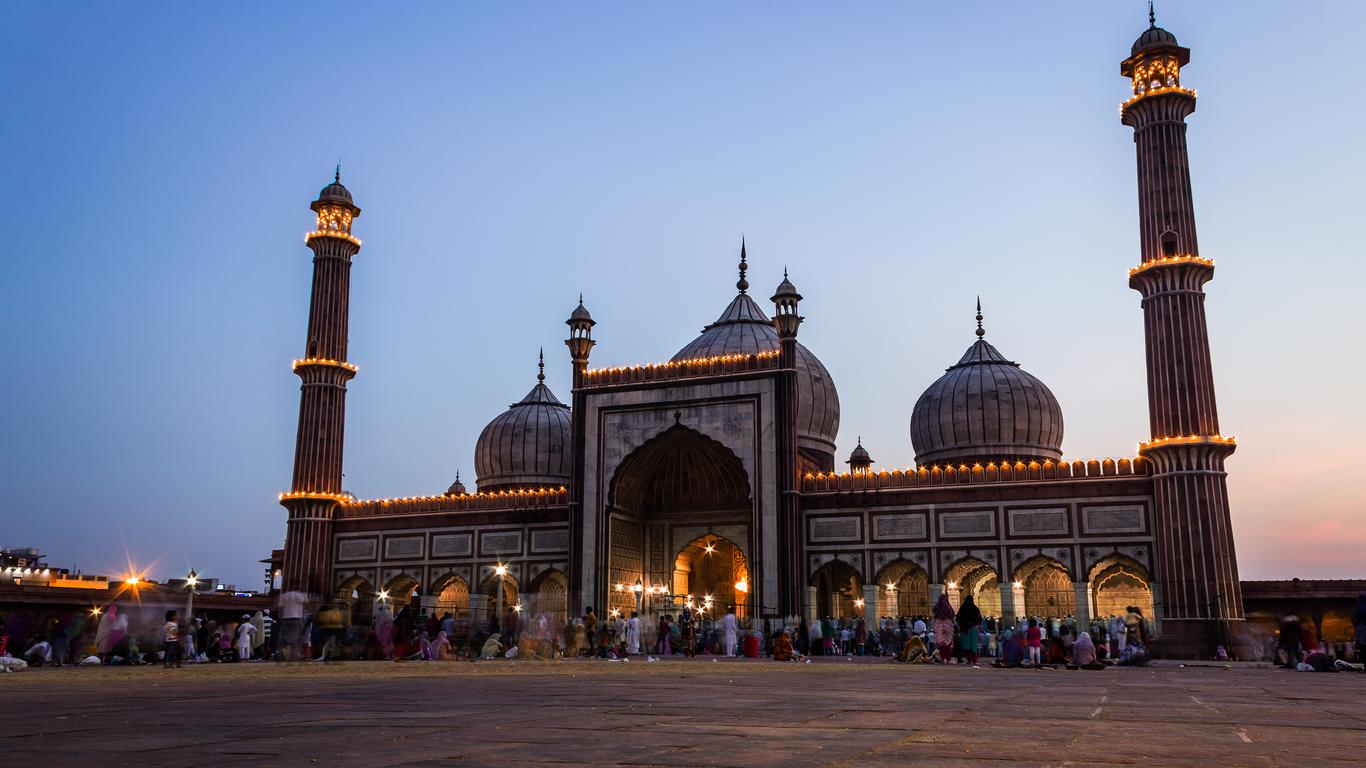One of the largest and most elaborate mosques in India, Jama Masjid holds a prominent position in the Indian capital New Delhi, facing west towards the holy city of Mecca. It was built between 1644 and 1656 by the great Mughal emperor Shah Jahan, who was also responsible for the Taj Mahal, using the labour of more than 5,000 workers.
Jama Masjid features three large gates and four towers, together with two minarets which exhibit distinct strips of red sandstone and white marble which were the main materials used in its construction. Each of the minarets has five storeys with protruding balconies, while beautiful calligraphy adorns its adjoining edifices. There are 130 steps leading up each minaret, with the southern one open to visitors to take in the panoramic views across Delhi towards Connaught Place and Sansad Bhavan. The eastern gate is its largest and once served as the Royal entrance, while the three sides of the mosque are lined with openarched colonnades and capped by three marble domes. Jama Masjid is built on a red sandstone porch which sprawls across 1,200 square metres and has the capacity for more than 25,000 devotees to pray within its courtyard. In its centre lies a hauz ablution tank where devotees can wash their hands, feet and face before entering the main building in a symbolic ritual of baptism, with the prayer hall floor covered in black and white marble to resemble an Islamic prayer mat. A cabinet at the north gate of Jama Masjid exhibits treasured relics once belonging to the Prophet Muhammad, including a deer-skin Quran, his red beard hair and a pair of sandals.
Jama Masjid is located within an easy walking distance of the Old Delhi Railway station, with Chawri Bazaar being the closest metro station. Public bus services also stop near its entrance and connect with New Delhi’s surrounds, while rickshaws and taxis can be found in abundance on its outskirts.
Officially known as Masjid-iJahān-Numā, the mosque was inaugurated by a Mullah from Bukhara, Uzbekistan in July of 1656. Following British victory during the Indian Rebellion of 1857, the mosque was stationed with soldiers who threatened to demolish it, although only the madrassa Islamic school at its southern end was eventually destroyed.





